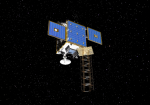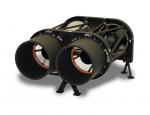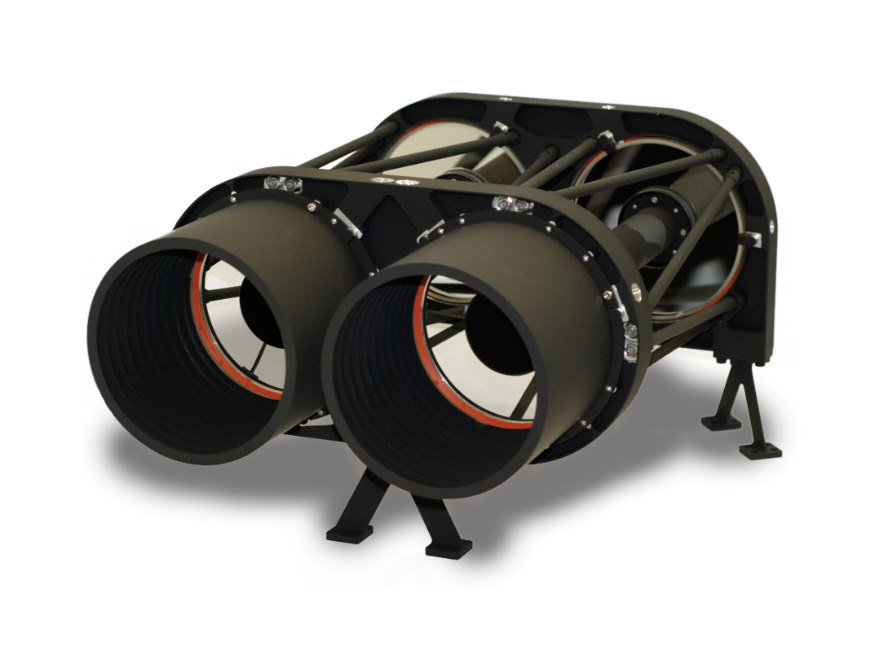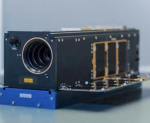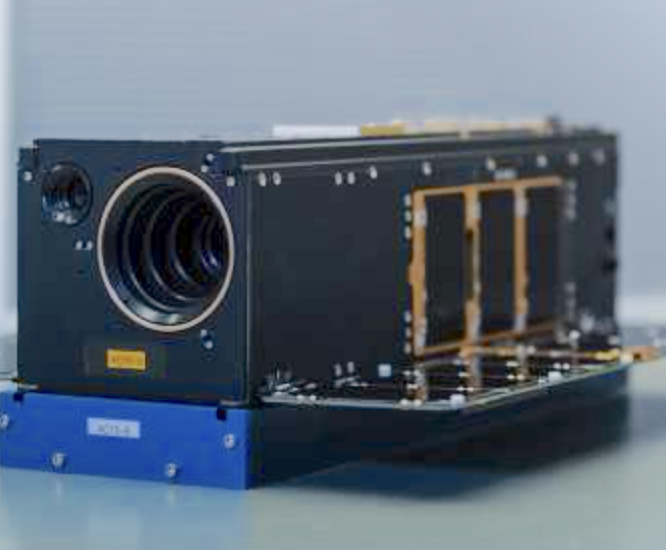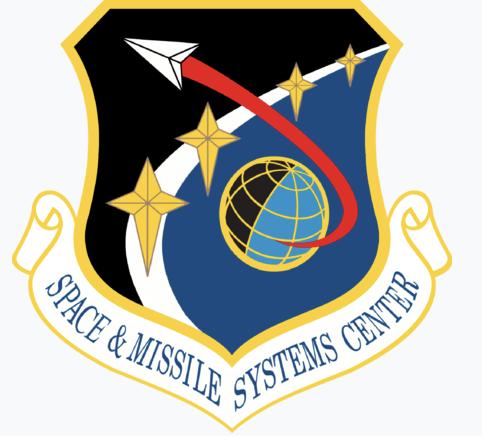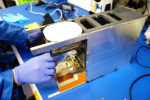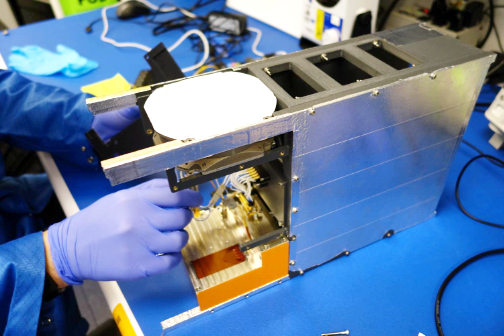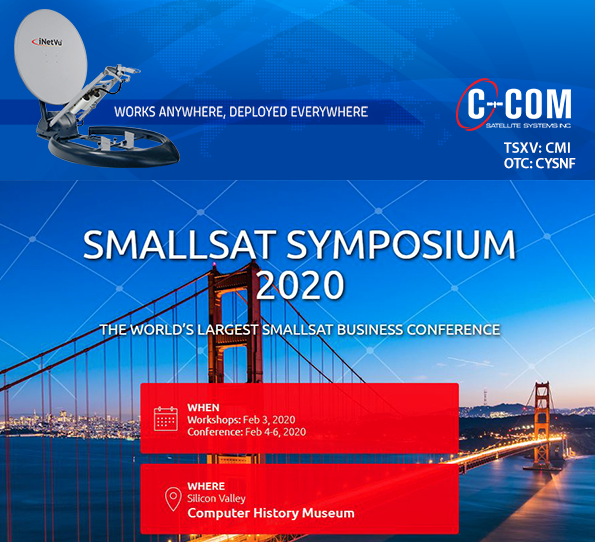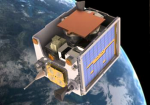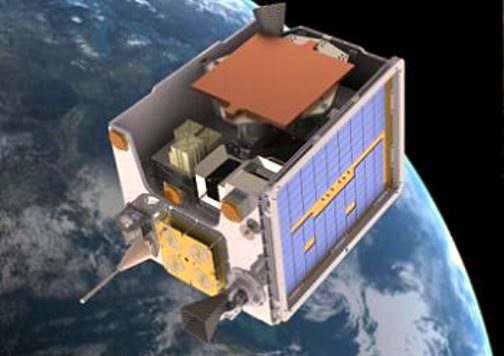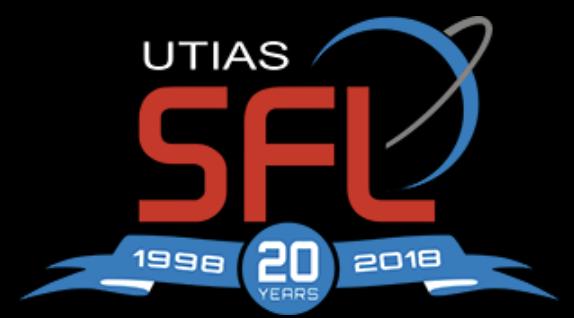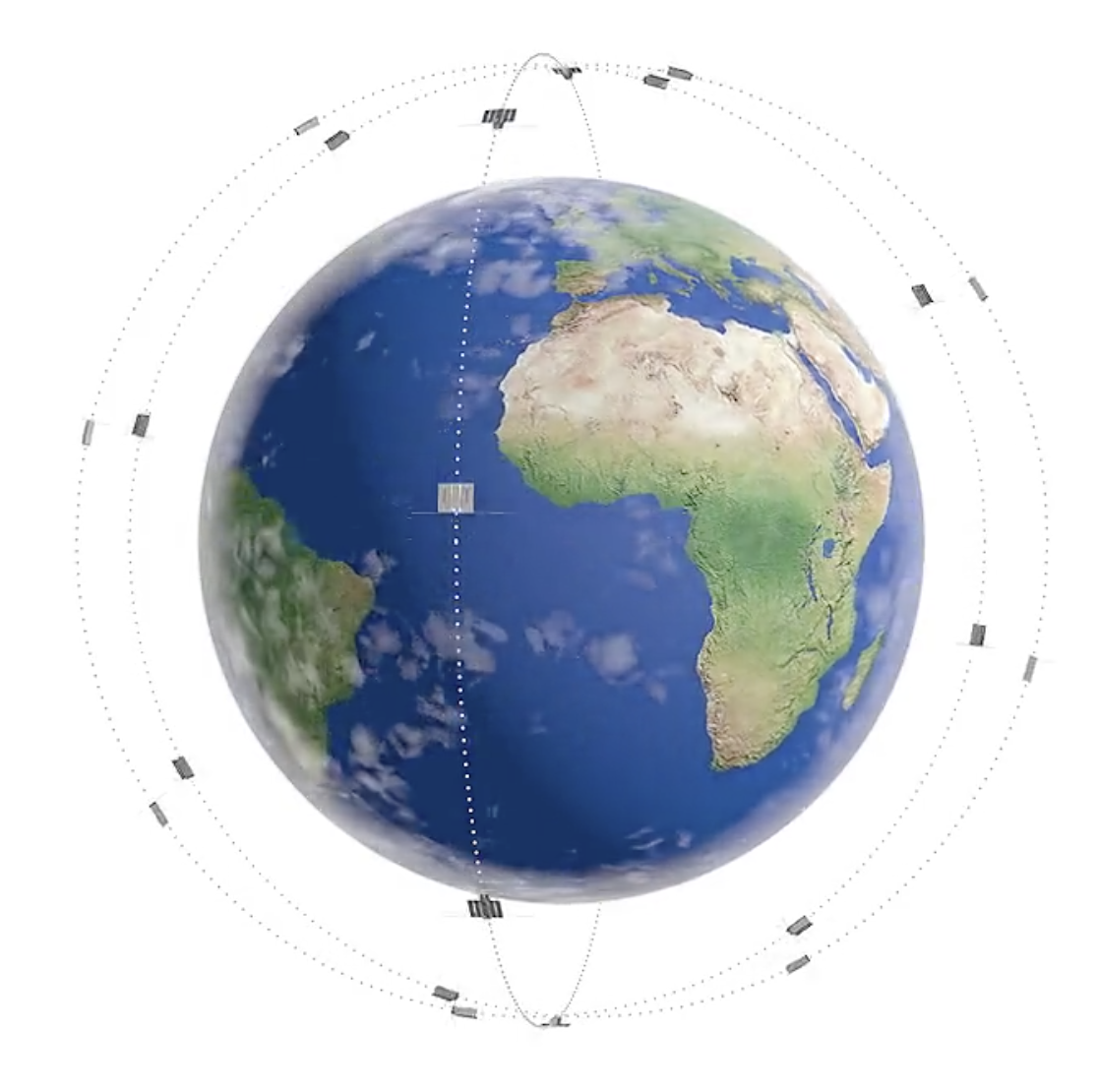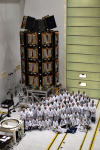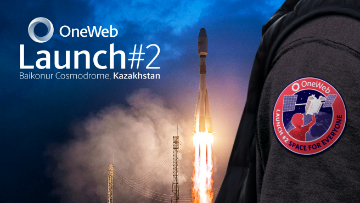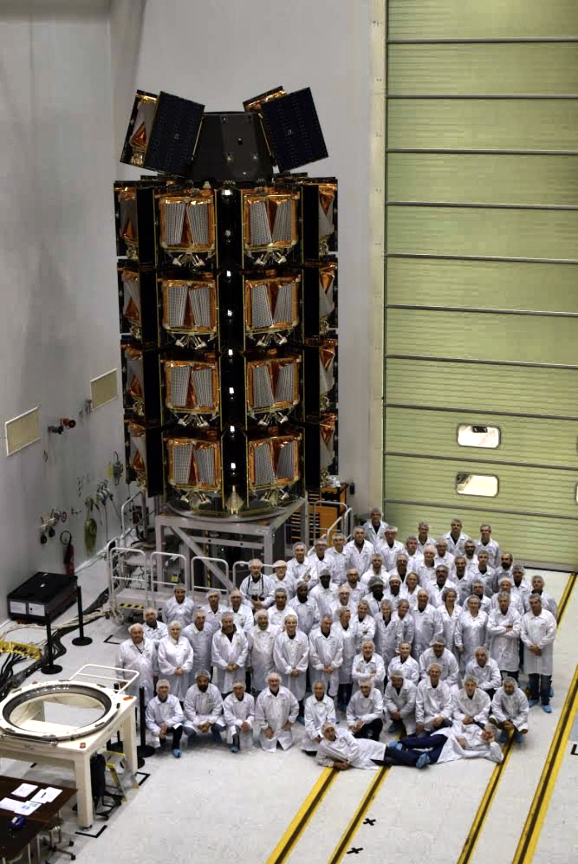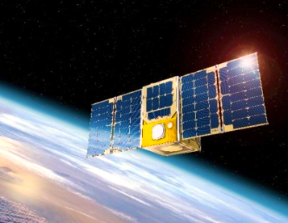

Following the European Space Agency Ministerial Council Space19+ meeting in Seville, the UK Space Agency confirmed they will invest £374 million per year with ESA and Surrey Satellite Technology Ltd. (SSTL) announced their kick-off for the implementation phase of the firm’s Lunar data-relay spacecraft, Lunar Pathfinder.
The Lunar Pathfinder spacecraft is designed to provide affordable communications services to lunar missions via S-band and UHF links to lunar assets on the surface and in orbit around the Moon, and an X-band link to Earth.
As early as Q4 2022, the 280 kg. Lunar Pathfinder spacecraft will be a mission enabler for polar and far-side missions, which, without direct line of sight of the Earth, would otherwise have to procure their own communications relay spacecraft.
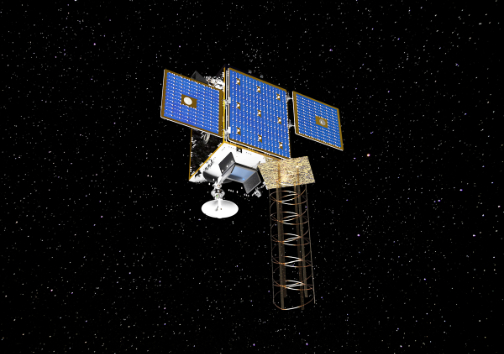
Artistic rendition of the Lunar Pathfinder smallsat.
Image is courtesy of SSTL.
Lunar Pathfinder is a more cost effective alternative to Direct-to-Earth solutions and a credible alternative to institutional deep-space ground stations, offering orbiters and near-side missions a better availability, enhanced safety and improved data-rate.
To support booming demand from Lunar missions and a clear goal in the scientific community to undertake detailed study and analysis of the Aitken Basin, Lunar Pathfinder intends to operate in a stable elliptical orbit to provide long duration visibility of the Southern Lunar Hemisphere each day, with maximum opportunities for the transmission and reception of data between Earth and the lunar surface.
NASA’s Artemis program also calls for “landing the first American woman and next American man at the South Pole of the Moon by 2024, followed by a sustained presence on and around the Moon by 2028” and Lunar Pathfinder is accordingly working toward a launch in Q4 2022 to support early NASA missions.
In parallel to the Lunar Pathfinder mission, SSTL has been working on future plans for a constellation of spacecraft around the Moon that will be capable of providing enhanced communications, as well as navigation services for the Lunar market as it grows from exploration to commercial exploitation and even tourism.
Acting both as technology and service demonstrator, Lunar Pathfinder is the opportunity for scientific and commercial mission developers to support the development, test and standardization of Lunar communication infrastructure, and for emerging off-planet telcos to acquire experience of lunar asset operations and off-planet service delivery.
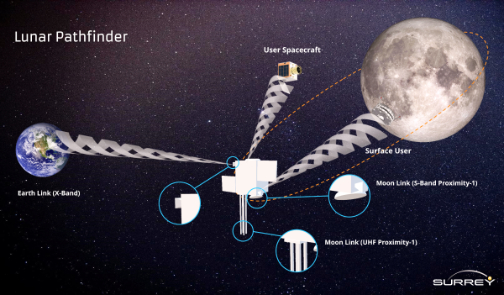
Infographic of the Lunar Pathfinder mission.
Image is courtesy of SSTL.
Lunar Pathfinder is laying the foundation to support sustainable science and exploration for the next twenty years and beyond—bringing with it the possibility that when humans next set foot on the Moon we will be hearing not “Houston we’ve landed” but instead “Guildford…
Phil Brownnett, SSTL’s Managing Director said that Lunar Pathfinder will be the first commercial service to address the need for data relay around the Moon and will demonstrate an innovative business idea and the company fully expect sit to also stimulate the emerging Lunar market. By pioneering a commercial solution and service delivery model in lunar orbit, SSTL and ESA are opening the door to providing services to the solar system and contributing to the scientific progress of deep space exploration.
David Parker, ESA’s Director of Human and Robotic Exploration commented that the Moon is a cornerstone of ESA’s exploration strategy. This decade, humans and robots will visit uncharted territory and return with new discoveries—communications is key to send scientific and operational data to Earth. ESA is returning to the Moon with commercial and international partners, and the Lunar Pathfinder mission will be an integral part of these missions.

